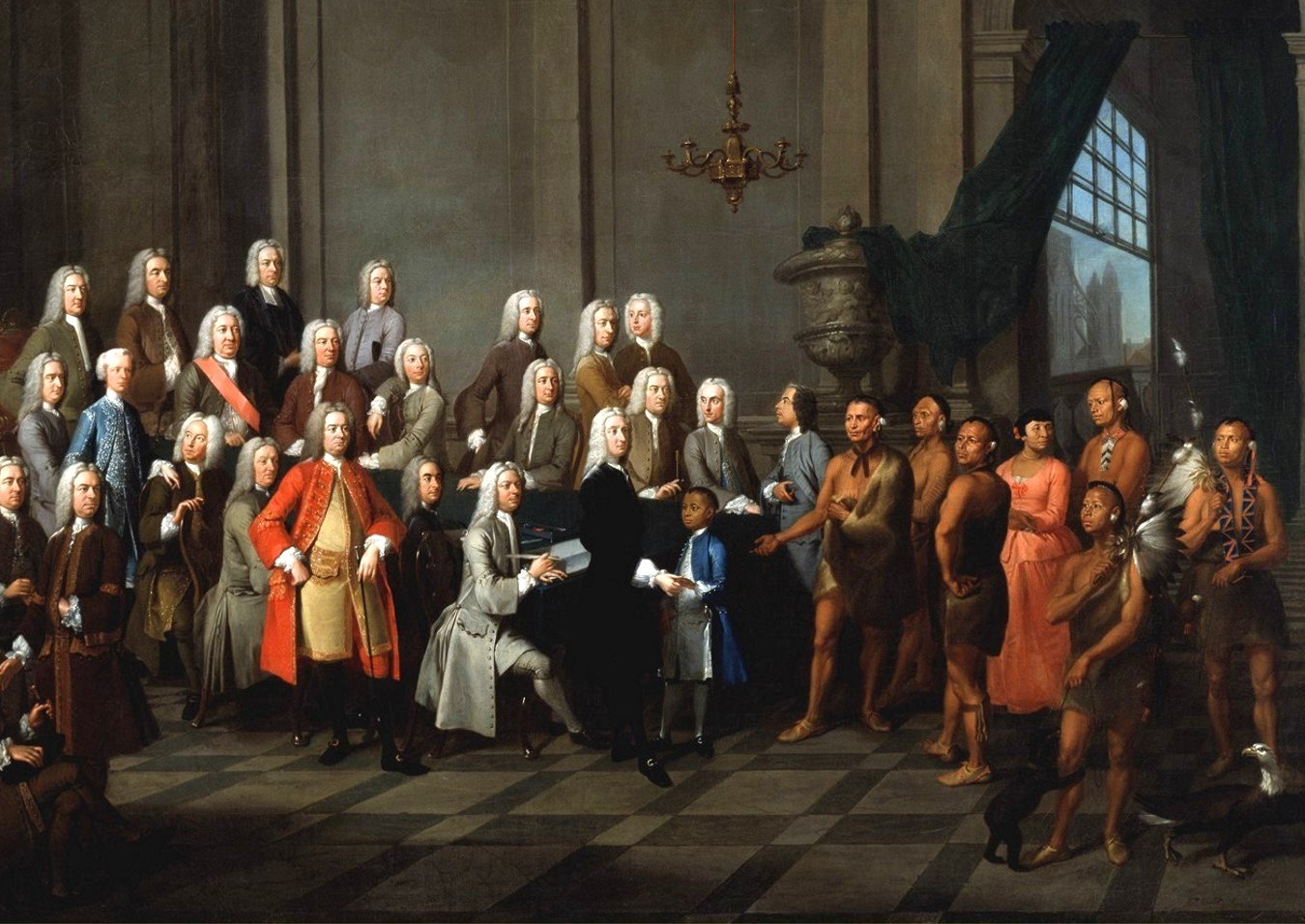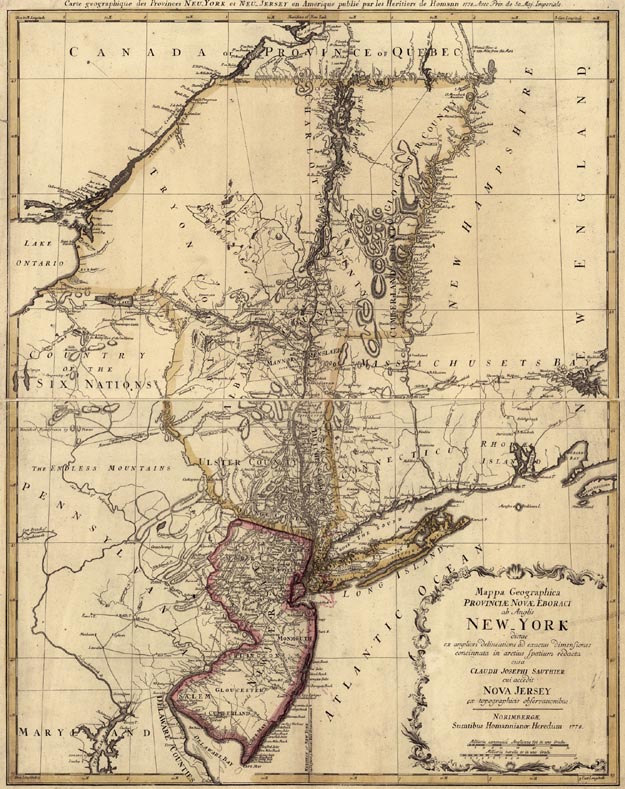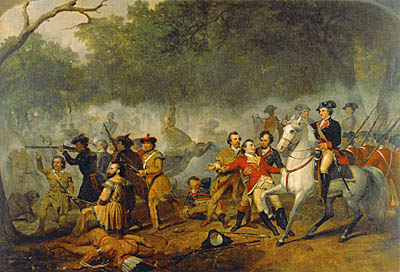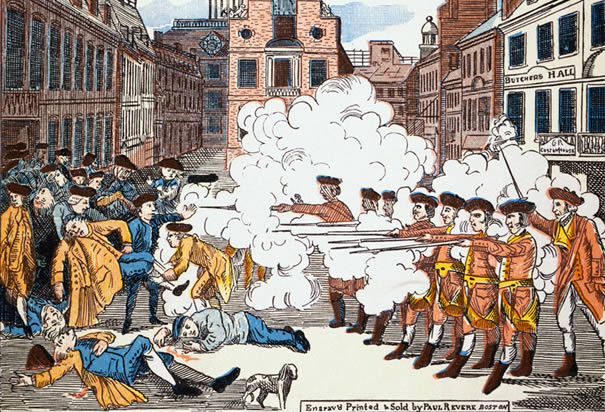1. Common Cultural Trait Among Native Peoples--in North America was their conception that, as a people, they were granted the right to use the land that they occupied, but that individual members did not have any ownership rights to a particular plot of land. They were willing to share the land they had been granted with others, as long as they received “just” compensation for its use--and with the understanding that they could revoke the right to use the land at any time.
2. European cultural practice--on the other hand, Europeans utilized a different concept, which emphasized the rights of individuals to own a particular piece of land, with which they were allowed to use in anyway they chose--including selling it to someone else at a hefty profit.
a) Europeans also delighted in “sharp dealing,” meaning selling commodities at the highest possible price while buying commodities at the lowest possible price.
3. American Land Hunger—financial mobility for most whites living in British North American was reliant upon the availability of cheap land. Many of our sainted “Founding Fathers” were intimately tied up in a variety of land schemes, and large landowners looking to resell portions of the holdings to eager western pioneers.
a) Proclamation of 1763—the treaty that ended the French and Indian War (Seven Years’ War in Europe) did two things that angered many white colonialists in North America. It granted religious tolerance to Roman Catholics in Quebec, and it forbade further settlement by Europeans west of the Allegheny Mountains. This made economic advancement for the average American (as these people had begun referring to themselves) more difficult—and made the large landholdings of economic elites—people like George Washington and Thomas Jefferson—worth less.
b) The Iroquois Covenant Chain—the Six Nations of the Iroquois (Seneca, Mohawk, Oneida, Cayuga, Onondaga, and the Tuscarora, after they left Virginia, acted as a buffer between the French on the northern side of the St. Lawrence River, in return for a variety of “gifts” from the Americans. This relationship changed with the end of the war, and the French ceding their claim to Canada and the lands north of the Ohio River
B. The Cost of the Conflict
1. The Frontier--is defined by the conflicts over possession of land between Europeans (or, as we might start calling them, whites) and native peoples. These conflicts necessitated that European powers found it necessary to have armies on the ground in the American colonies to keep the peace. All of this cost a great deal of money, and led to the European powers--England in particular--to seek ways of making the colonists bear a greater share of these costs.
2. Attempts to cut British costs--centered on limiting the contact between whites and native peoples by restricting the settlement of whites in frontier areas. The reason behind this was to cut costs for the British government, which could then hold the land at a lower cost, because fewer British troops would be need in the colonies if conflict between whites and Indians could be minimized.
3. Increasing tax revenue streams--the British government attempted to get American colonists to pay an increased share of the cost of maintaining the colonies’ administrative and military costs.
C. Colonial Resistance
1. French and Indian War (Seven Year’s War)--ended in 1763, resulted in Great Britain obtaining European control of most of North American east of the Mississippi River. It was the attempt to administer this territory--and make it a paying proposition, particularly regarding the fur trade with native peoples--that led to a series of political moves that alienated the European population south of the St. Lawrence river, and led to the American Revolution.
2. North American smugglers--a number of merchants in North American circumvented restrictions on trading with non-English traders. Most of the taxes and duties passed by Parliament were attempts to enforce this restriction, but juries in the colonies refused to convict smugglers. Although smugglers usually had to charge higher prices for goods (ironically, the Tea Act actually slashed the price of East India tea, making it much cheaper than the tea John Hancock was smuggling into Boston Harbor0.
3. British Corruption—in the eyes of many colonists, the British government was corrupt, and its means of financing government expenditures spendthrift. The Bank of England (owned largely by men who grew rich from Caribbean sugar plantations) financed the debt by selling bonds (promises by the government to pay the value of the bond, plus interest, in the future—much the same way the US government finances its debt today, as does just about every other industrialized nation in the world). Which is not to argue that the British government was not corrupt, since it was. Most men protesting about the lack of representation in Parliament would not have been represented if they lived in England, either, since they would not have met property qualifications to vote.
a) John Wilkes—while he became a hero to many because of his defiance of George III, he was himself spectacularly corrupt and debauched, elected from a “rotten borough” who only posed as a friend of the downtrodden.
4. “No Taxation without Representation”
a) Sugar Act (1764)--like many of the laws passed during the decade leading up to the American Revolution, this law cut the tax rate, but also beefed up enforcement--and British sugar was more expensive than the which could be acquired from French plantations in Haiti.
b) Stamp Act (1765)--required the presence of a stamp from the government on any legal document--and also on newspapers, magazines.
c) Quartering Act (1767)--required colonists to directly pay for the cost of troops in the colonies by housing and feeding them in their own homes.
d) Tea Act (1773)--required colonists to purchase tea from the British East India Tea Company. Even though the price of tea was slashed, colonists in Boston resisted the enforcement of this act by disguising themselves as Native Americans and tossing the tea into Boston Harbor.
5. Continental Congress--began as a body authorized by the individual colonial legislatures to petition for redress after Boston Harbor was closed down after the incident over the tea.
a) Sons of Liberty--one of the extra-legal bodies that sprang up as a result of these disagreements. Made up of the same kinds of people who were attracted to the New Model Army--small merchants, urban craftsmen, and small prosperous farmers.
b) Power of the Mobility--the “mob” had a long history of involvement in politics, characterized by taking protest to the streets and assaulting the property or person who was accused of putting their self-interest above that of the well-being to the community. The mob took to the streets because they had no other way of making their voice heard--they had no right to vote.
(1) The Boston Massacre
(2) The Boston Tea Party
II. Propaganda and Class
A. Propaganda
1. Thomas Paine and Common Sense--perhaps the only author to approach the popularity of Paine’s pamphlet in modern times is J.K. Rowling (Common Sense sold about 150,000 copies in a country of less then 3 million people, including slaves who were kept largely illiterate--the equivalent sale today, with a population of 300 million, would be 15 million copies)—or the 18th century version of a viral video, since tens of thousands of more people read Common Sense than purchased a copy. Paine’s irreverent, vigorous prose captured the mood of the times, and was probably responsible for giving voice to a great deal of dissatisfaction.
B. Class conflict
1. Worcester County Mass.--farmers closed down the county court system to prevent creditors from using the courts to collect debts; this same action after the victory over the British provoked a different action from the men known to us as the Founding Fathers.
2. Hudson Valley New York--small farmers at this location decided to support the loyalist side, because of the obscene rents they had to pay to Patriot Patroon landholders.
3. The Revolution and Slavery--the rhetoric of freedom and rights resonated with many slaves--and many whites in the northern colonies, who began to question the morality of holding other humans in bondage
a) Many slaves in the north fought for their freedom--and the freedom of whites--in the militias and in the Continental navy.
b) In the colonies of the south, on the other hand, many slaves fled their masters in the hope of gaining freedom promised by the British government (Thos. Jefferson’s reaction to this was excised from the final edition of the Declaration of Independence.









No comments:
Post a Comment